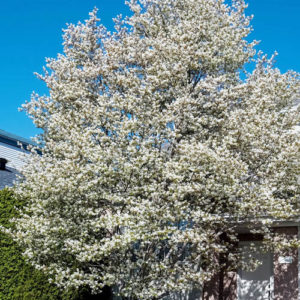Spicebush (Lindera benzoin)
$40.00
Plant Size: 1 Gallon pot
Name: Spicebush – Lindera benzoin
Spicebush is named for its spicy, fragrant leaves and stems. Spicebushes are special for lots of reasons: the fragrant bright yellow flowers that cover the branches in early spring, the warm yellow leaves in the fall, and their special designation as the host plant for the Spicebush Swallowtail butterfly.
Growth Characteristics
Height: 6 to 12 feet
Bloom Time: March
Hardiness: Zones 4 to 9
Light Requirements: Medium Sun/Average Shade, Shade
Soil Preference: moist to wet; acidic and alkaline
DISEASE, PEST AND DEER RESISTANCE
Spicebush is generally considered deer-resistant due to its strong, aromatic smell and taste, and it typically doesn’t have serious pest problems.
SITE CONSIDERATIONS
Spicebushes like rich soil that contains lots of organic matter, and like to be consistently moist. In nature, they are found in forests alongside deciduous trees. As long as your Spicebush is planted in soil with organic matter and consistent water, this plant can thrive in a wide range of places. Spicebushes are great for shrub borders, for color in shade or part-shade gardens, and up against house foundations in front gardens. Also, pollinator gardens, woodlands, and rain gardens. Can grow in shaded and moist areas along streams or ponds.
Value to Wildlife and Insects
The high-fat, high-energy berries formed on the female plants support numerous birds (both migrants and residents).
Spicebush foliage hosts Spicebush Swallowtail and Eastern Tiger Swallowtail butterflies, plus Promethea Moth and several other moth species.
Blooms support pollinators.
ADDITIONAL FACTS UNIQUE TO THE SPECIES (IF ANY)
This is a dioecious species, meaning there are female and male flowers on separate plants. Pollinated female plants produce fruit: glossy scarlet-red berries ripen in autumn. **NOTE** The Male/Female status of plants is unknown.
According to the USDA, “Because of its habitat in rich woods, early land surveyors and settlers used spicebush as an indicator species for good agricultural land.” You can close your eyes and imagine how beautiful, verdant, and good-smelling North America was when its forests were filled with natural Spicebushes.
Availability: 8 in stock





